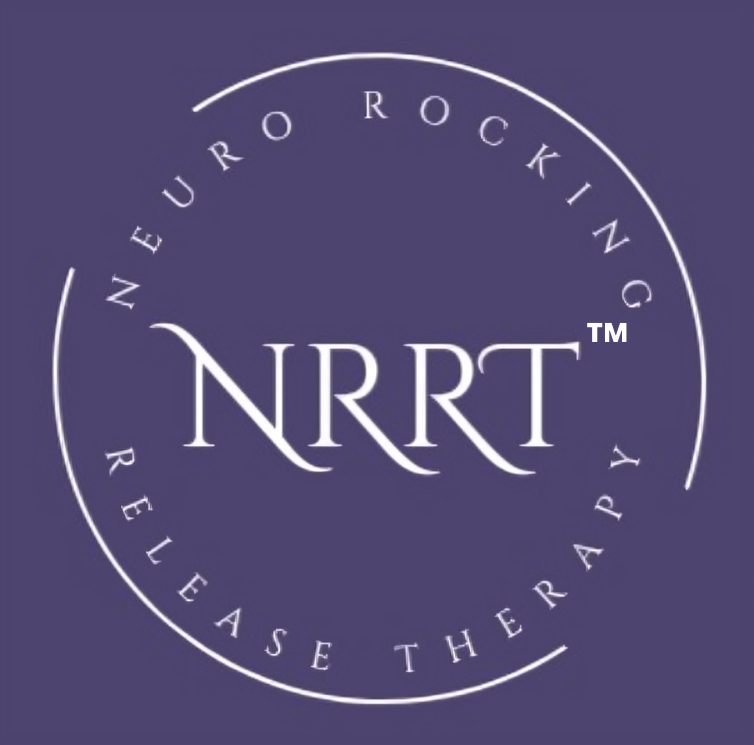NRRT™
Neuro Rocking Release Therapy™
NRRT™ is a form of gentle body work consisting of bilateral stimulation of the brain which resets the central nervous system (CNS) by balancing the responses of the parasympathetic and sympathetic nervous systems (P-SNS) and it is inspired by years of clinical experience and observation, modern neuroscience, Gestalt psychotherapy and ancient Japanese and Indian bodywork techniques known to sooth the nervous system.

Brain activation via bilateral movement stimulation is not new. Many of us are aware of Eye Movement Desensitisation and Reprocessing (EMDR) therapy which was initially developed for the treatment of post-traumatic stress disorder or PTSD. Bilateral brain stimulation is all about rhythm and oscillation, contraction-expansion, left-right, yin-yang, logical-creative and any other dualities one can think of. NRRT™ strengthens the neuropathways and bridges between the left brain and the right brain and it promotes a sense of wellbeing and peace within. Life seems much more enjoyable when we approach our days from a place of calm and acceptance.
Some other common activities that have a similar effect are walking, jogging, playing and listening to music, swimming… With NRRT™ and because it is a body-work modality, the receiver also gets to actively practice trust, receiving, allowing, letting go of the need to control and finally surrendering.
Why is this important? Because in the stressed modern societies, the collective aim is to push, achieve, get, chase, hassle, control and we live in a chronic state of urgency. Very rarely do we get a moment or make time to soften up our bodies and minds, to surrender, to breathe, to reflect on trust, gratitude, conflict, and other important pillars of our holistic wellbeing.
what are the benefits of NRRT™?
Cardiovascular: Rocking lowers the heart rate and blood pressure; it stimulates the blood circulation and spreads warmth throughout the body.
Immune: Rocking stimulates the lymphatic system aiding with the elimination of debris from the chemical processes and toxins from food, water, substances and drugs. The lymphatic system, unlike the cardiovascular system, does not have a pump; it relays on the movement of the body to flow freely and avoid stagnation of fluids such as oedema around the joints, especially in the lower limbs.
A free-flowing lymphatic system fights efficiently against invasions from external pathogenic factors (EPF) and “ingrown” imbalances resulting from strong emotions, unresolved trauma, negative and limiting mindsets and poor habits.
Nervous: Rocking has a profound effect on the human nervous system and science proves that humans are wired to respond to rocking. It helps our development in the early years of life and it soothes the nervous system. Rocking reduces the sympathetic nervous system (SNS) overload (fight/flight/freeze mode) which has become a pandemic and a chronic state of being among the citizens of modern societies. People are angry, anxious, snappy, frustrated, unsatisfied, over-emotional or under-emotional (freeze mode), relationships do not last longer than a few months, parents and children cut ties, the suicide rate is the highest it has ever been, high rates of infertility too, there are school shootings, acid attacks, social media bullying… you mane it.
The SNS relays in the amygdala in the centre of the brain, adjacent to the hippocampus (responsible for memory forming too). The amygdala activates in the face of perceived danger or threat and is the chief in the processing of emotions and memories associated with fear. The amygdala is overactive and dysregulated in cases of PTSD, triggering inappropriate responses such as aggression, withdrawal, fight, freeze, fly. Also, loss of appetite or over-eating, feeling stuck in life, hypersensitivity.
The PNS – the relaxation system – is activated by rocking and it sends signals of safety, comfort, calm, wellbeing, relaxation by the release of certain hormones such as serotonin (the mood stabiliser), dopamine (the reward chemical), oxytocin (the love hormone and endorphins (the pain killer) which are involved in many essential processes like heart rate and digestion as well as mood regulation. In a regulated nervous system, the endocrine, cardiovascular, respiratory, renal, digestive, urinary, reproductive, skeletal and lymphatic systems function smoothly and one feels content. Most chronic pain cases have a strong psycho-emotional component and a dysregulation of the nervous system.
- The rocking motion has a synchronising effect on the brain, triggering the PNS to engage and the SNS to disengage.
- Rocking stimulates the balance mechanism of the inner ear which creates a better sense of space and clean alert.
- Rocking establishes a healthy heart rate.
- Rocking stimulates Qi, blood and lymphatic circulation.
- It spreads body temperature evenly preventing cold hands and feet.
- It helps the receiver become aware of where they are holding and it gives them the opportunity to release if they choose to do so.
- Life is rhythm, frequency, pulsing. Rocking helps people connect with their body’s rhythm. Combining and experiencing slow and fast movements through the NRRT™ helps completing the oscillation spectrum map of each individual, bringing a deeper sense of integration within their own skin.
- Mammalian brains are wired to respond to being rocked and there is now science to show that swaying to sleep may result in falling asleep faster, better quality sleep and improved memory and concentration.
- Rocking a baby provides a better medium for the child’s development.
- The right and left brain communication bridges strengthen resulting in more balanced and inspired action by the individual. Not too logic and rigid, not too creative and chaotic. Balance restores via rocking.
- Rocking maintains muscle tone and supple joints and it is considered a mild form of exercise.
- It reduces pain, anxiety, depression, stress, hypo and hypersensitivity.
- Helps lower blood pressure and promotes digestion.
- Resets the spine thanks to a “wavy snake” motion.
what inspired me to developing this modality of healing?
Over my years of clinical practice and self-experience and especially after my recent acupuncture studies, I have come to the conclusion that it is all about the nervous system. Sustained physical and emotional pain has the root in the nervous system, in the organs it innervates, in the cells it gives the spark of life to.
Having experienced brief moments of rocking therapy as part of massage during my training in the Sensitive Gestalt Massage in 2005, I could not help but incorporating bits here and there in my other treatments too and I have found that the benefits for the receiver are profound. So much so that I decided to develop it as a healing modality in its own right.
who is it for?
- Chronic pain sufferers
- Overactive and underactive thyroid
- People under high levels of pressure and stress
- People who feel on edge, have a snappy temper and lack patience
- People struggling falling off to sleep and/or wake through the night
- People in state of shock
- People who frequently get into conflict with others
- People who feel nervous a lot of the time
- Abuse survivors
- People who hold trauma in their body (pain, discomfort, tightness in chest, poor digestion, stiffness, tension, headaches)
- People with fluid retention (oedema)
- People who are bed-bound or have been for a while
- Depression, PTSD and anxiety sufferers
- Aging patients with poor memory and/or tremors
- People who feel emotionally stuck and lacking inspiration and unable to make decisions
- People who feel heavy and lethargic
- People that lead sedentary lives
NRRT™ can be applied on its own or as part of another treatment, be it talking therapy, osteopathy, acupuncture, massage, rehabilitation, speech therapy…. It can be an excellent addition to any form of therapy as it gets the receiver ready and open for healing in whatever modality it presents. This is why I am teaching this technique to other professionals, starting December 2022 at the Northern College of Acupuncture where I qualified.
what to expect from a NRRT™ session?
The initial appointment is of an hour and it includes assessment and treatment. The assessment consists of a questionnaire and scoring so that we can compare scores after the first and subsequent treatments so that you can see the positive progress achieved. You are advised to bring loose clothing and not to have had a copious meal beforehand.
How Much?
- £65 for the initial 75-minute session: consultation and treatment.
- Subsequent sessions are either £45 for 45 minutes and £50 for 1 hour.
- A pack of 5 x 1 hour is £225.
- A pack of 5 x 45-minute is £202.50
- It can also be combined with massage and acupuncture: half NRRT™ and half acupuncture or half NRRT™ and half massage.
Would you like to become a certified NRRT™ therapist?
Read the course description here.
Do not hesitate to contact me and show your interest. Each course runs as soon as we have enough people. To be added to the waiting list, Contact Us!
Check out our NRRT™ Directory
Read More
What our visitors Say
See what others are saying on treatwell!


Based on 400+ Reviews



